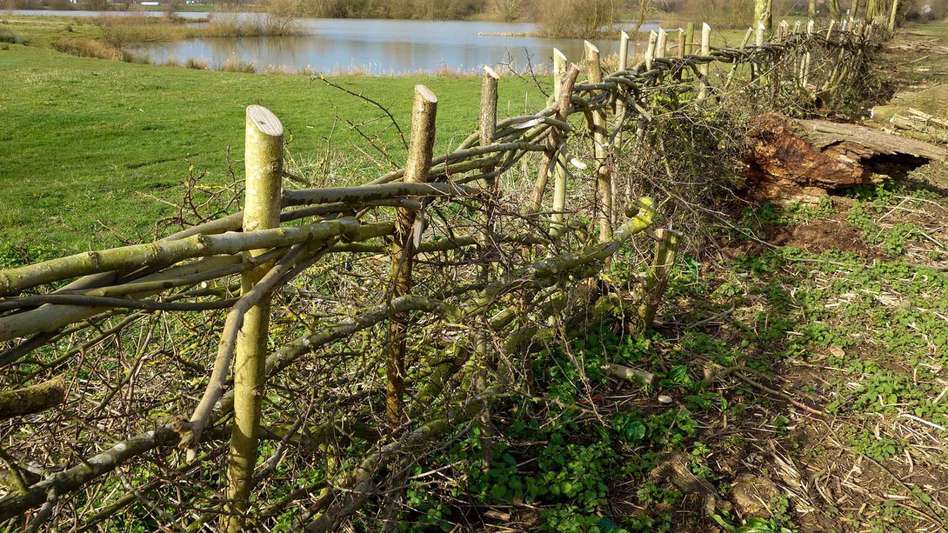Boundaries: the hedge and ditch rule

Do you know about the hedge and ditch principle? It’s an ancient rule that can be a shaft of sunlight through the fog of a rural boundary dispute.
The hedge and ditch rule
In a case in 1810, a few years before the Battle of Waterloo, Mr Justice Laurence said: “The rule about ditching is this. No man, making a ditch, can cut into his neighbour’s soil, but usually he cuts it to the very extremity of his own land: he is of course bound to throw the soil which he digs out, upon his own land; and often, if he likes it, he plants a hedge on top of it.”
It seems at first almost a comical idea – the judge cannot have known what any particular farmer did in the past - he was making it up – but as it turns out, it has been very useful ever since.
The hedge and ditch rule is a rebuttable legal presumption that where there is a hedge and ditch running along the boundary of a parcel of land, then the boundary lays along the farthest edge of the ditch from the hedge. The presumption is that the owner of the land dug the ditch along the edge of their boundary and then piled up the soil along their land, after which a hedge was planted.
The hedge and ditch principle is simple and easy to apply
In establishing the true location of a boundary, the court will typically weigh up a number of factors, including the topography and other physical attributes. The hedge and ditch principle brings some certainty to boundary questions in the country.
Can the hedge and ditch rule be rebutted?
Yes. The rule may only be a starting point depending on the precise circumstances. Examples of where is doesn’t apply include:
- if the boundary was fixed after the ditch was dug
- if the ditch can be shown to have been dug whilst the land was in common ownership
- it can also be overruled by what the title deeds say.
Another example of rebuttal was seen in the case of Steward v Gallop [2010] EWCA Civ 823 where the hedge ran only along part of the relevant boundary and the hedge predated the ditch.
If you have a boundary dispute, talk to our specialist solicitors today
The Parmar v Upton case
In the Parmar v Upton case [2015] EWCA Civ 795, although the rule ultimately proved decisive, this was only after significant time and costs had been spent by the parties. The Court of Appeal re-affirmed that the long-standing hedge and ditch rule is still good. In this case, the appellant could not, despite some fresh evidence, overturn the presumption that the hedge and ditch rule applied and consequently the appeal was dismissed.
Using Land Registry title plans in boundary disputes
The precise location of a boundary is a common dispute between neighbouring landowners. Often, neighbours will look to the Land Registry’s title plan as proof of the boundary’s location.
Sadly, Land Registry title plans are based on Ordnance Survey maps which are not definitive as to the legal extent of the boundaries around the property. Land Registry title plans are typically for identification purposes only and boundary disputes rarely turn on the title plans themselves.
Emotions running high
Often, the problem is not about boundaries – it is about the relationship between individuals. In a boundary dispute the emotions often run hight, neighbours fall out, they stop talking to each other, and then when there is an issue, the dispute escalates rapidly.
The skill of the solicitor in a boundary dispute can be a subtle one. Court proceedings may sometimes be necessary but approaching the situation firmly but diplomatically can often achieve a better result for the client.
Tees is here to help
We have many specialist lawyers who are based in:
Cambridgeshire: Cambridge
Essex: Brentwood, Chelmsford, and Saffron Walden
Hertfordshire: Bishop's Stortford and Royston
But we can help you wherever you are in England and Wales.
Chat to the Author, Darren Perks
Executive Partner, Dispute Resolution and Litigation, Bishop's Stortford office
Meet Darren
- Areas of expertise
- Accreditations
- Testimonials
Legal 500 UK 2021
'Darren Perks and Caroline Metcalf are stand-out partners.'



